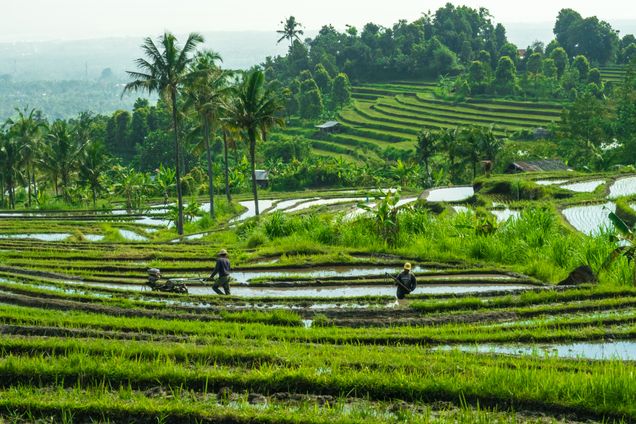Skill Transferability, Migration and Development: Evidence from Population Resettlement in Indonesia

Throughout history, soil and climate conditions have shaped migration patterns and influenced the spread of human capital and technology. Previous studies suggest that similarity in agroclimatic conditions is important for the transferability of skills. However, there is limited evidence on these relationships because skill transferability is difficult to measure, migrants sort into places where their skills are transferable and spatial diffusion processes are slow and often confounded by time trends.
In a new journal article published in the American Economic Review, Samuel Bazzi and coauthors use a natural experiment in Indonesia to provide causal evidence on the role of location-specific human capital and skill transferability in shaping the spatial distribution of productivity. Between 1979-1988, the Indonesian Transmigration Program relocated two million voluntary migrants (transmigrants) from the Inner Islands of Java and Bali to newly created agricultural settlements in the Outer Islands. The authors develop a novel proxy for skill transferability based on the similarity in agroclimatic conditions between the two locations.
Main findings:
- Villages assigned migrants from regions with more similar agroclimatic characteristics exhibit higher rice productivity. On average, an increase in agroclimatic similarity by one standard deviation leads to a 20 percent increase in village-level rice productivity.
- Productivity gains from skill transferability are larger in adverse growing conditions, with the steepest productivity losses experienced by villages whose migrants are from the most dissimilar origins.
- Agroclimatic similarity has small and insignificant effects on the productivity of cash crops that have less location-specific farming methods than rice.
- Similarity between transmigrants’ languages and the Indigenous language in their new villages yields significant positive effects on rice productivity and appears to be more important in places with greater scope for interacting with natives.
- Agroclimatic similarity within villages still has positive effects on the level of economic development in 2010. A one standard deviation increase in agroclimatic similarity leads, on average, to 6-12 percent greater average income by 2010.
The findings have important implications for the design of future resettlement programs, suggesting sizable aggregate rice productivity gains from optimally allocating migrants on the basis of agroclimatic similarity. The findings also indicate that both social capital within resettlement areas and interactions with locals are important adaptation mechanisms that should be considered when resettling people to new growing environments.
Read the Journal Article